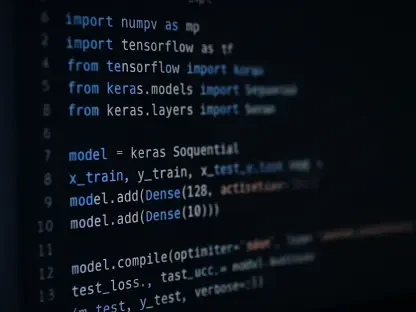Programming languages have long been at the core of technological advancement, shaping not only how software is developed, but also defining the boundaries within which they operate most effectively. These languages are not just tools; they align with specific application domains, where their performance characteristics, syntax, and libraries are perfectly suited to solve specific classes of problems. This phenomenon, where programming languages excel in their “killer domains” instead of revolving around a singular “killer app,” provides insight into how effective software strategies are developed. This notion speaks to how some languages have gained dominance in certain sectors due to their inherent strengths and optimal alignment with domain-specific requirements.
As programming languages continue to evolve, each has carved a niche where they not only survive but thrive. This happens by capitalizing on characteristics like memory control, efficiency, and ease of abstraction handling. Statically typed languages such as C have enabled kernel and operating system development, letting precision and predictability take the front seat. C++ has become entrenched in low-level systems programming, playing a pivotal role in game engine and graphics software development. Similarly, Rust emerges as a modern solution for systems programming with memory safety and concurrency guarantees, tempting new systems-level applications. Recognizing the importance of this domain alignment allows developers to make informed choices on language adoption, skill development, and ecosystem investment. In the next section, exploration of the role of dynamically typed languages reveals how specific language characteristics bolster their presence in distinct domains.
Dynamically Typed Languages and Their Specializations
Dynamically typed languages like Python have etched a significant mark in sectors such as scientific computing and machine learning. Supported by libraries like NumPy and TensorFlow, Python has gathered a robust community that amplifies development and sharing of powerful tools and methodologies. Its versatility and expansive ecosystems assure researchers and developers access to exceptional resources tailored for computational applications, fostering scientific advancements. Julia, renowned for its performance and modern syntax, brings optimization to numeric computations, joining Fortran and Matlab in offering distinct advantages. Fortran, with its legacy codes, attracts applications with extensive long-standing computations, while Matlab provides an intuitive interface for professionals seeking a user-friendly environment for numeric and scientific problem-solving.
These languages thrive alongside their substantial ecosystems that nurture tools, documentation, and community support aligned with their killer domains. Their growth is inherently tied to domain-specific optimizations that tap into the specific needs of computational tasks, ensuring the value languages bring to dedicated advancements thrives. With AI-driven coding tools emerging to address syntax challenges and promote ease of use, the landscape continues to evolve. They redefine boundaries while enhancing existing language advantages in their established domains. Still, efficiency and proficiency in specific domains remain guiding according to market needs, innovations, and technological progression.
Impact on Web Development and Broader Applications
Web development stands as a testament to the relevance of domain-specific programming advantages, with JavaScript dominating frontend tasks and TypeScript adding its own flair through refining JavaScript’s capabilities. Both languages intimately align with the architecture of the web, thriving due to their prevalence in browser environments that ensure seamless operations through robust functionalities. Their integration into web frameworks and libraries showcases how these languages have successfully permeated every layer of modern web technology, driving dynamic, interactive user experiences through intuitive designs and executed methods.
Backend web development sees Ruby (through Ruby on Rails) and PHP carve niches with developer-friendly frameworks. By democratizing web development, these languages provided easier entry points for professionals endeavoring to venture into web technologies, ushering generations of development communities tapping into their rich ecosystems. These languages’ influence spans beyond their core functions, impacting diverse sectors that leverage their specific strengths while adapting to innovative use cases cemented by market demand. Ultimately, striking the balance between technical efficiency and user familiarity in their alignment with the web’s core attributes ensures perpetuated growth and advancement.
Navigating Future Programming Efforts
Programming languages are vital to technological progress, shaping software development and delineating their operational boundaries. These languages are more than mere tools; they align with distinct application domains, exhibiting performance traits, syntax, and libraries tailored to tackle specific problem sets. Instead of revolving around a singular “killer app,” many languages shine in their “killer domains,” revealing how successful software strategies are crafted. This explains why certain languages dominate sectors due to their strengths and alignment with domain-specific needs. As languages evolve, they establish niches where they excel by leveraging memory control, efficiency, and abstraction ease. For instance, statically typed languages like C excel in kernel and OS development due to precision. C++ dominates in low-level systems programming, notably in game engines and graphics. Rust stands as a contemporary choice for systems programming, with strengths in memory safety and concurrency. Understanding domain alignment aids developers in choosing languages, honing skills, and investing in ecosystems.









